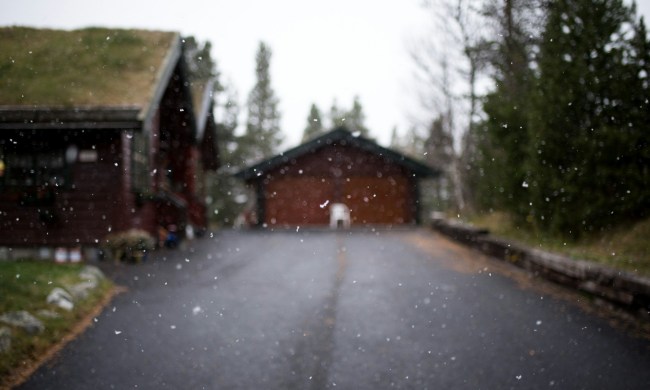When it comes to dangerous working conditions, roofing is probably high on the list. While it’s always best to call a professional in for roof work, if you’re an avid DIYer, you may want to tackle your roof project on your own. You may be doing a complete roof replacement, putting in a skylight, or just tackling a small project like removing debris or repairing some small damage from a storm. Whatever your reason is for braving the roof work, we’re going to make sure you’re well versed in how to work on a roof safely. The risk of falling must be avoided, and there are some products and precautions you can put in place to ensure that the risk of such perils is eliminated.

Roofer safety equipment you’ll need
You don’t want to tackle a roofing project without appropriate safety equipment. While it may seem excessive, particularly if you’re doing a quick repair job or branch removal, even a brief roof job runs the risk of falls. Always err on the side of caution and use safety equipment when working with heights. Here’s what you’ll need to gather:
Ladder with a suitable height
The ladder you use needs to be able to reach about three feet above the roof safely. This will allow you to comfortably move from the ladder to the roof without a struggle.
Safety harness
A safety harness should always be worn when working on a roof as it will catch your fall should you slip or lose your balance. Be sure the harness is worn properly according to the product’s instructions. Keep in mind that the harness is a last resort safety measure, and you should always take precautions to avoid falls.
Nylon or polyester rope with high breaking strength
We can’t stress the importance of the high breaking strength of your rope. This will ensure the rope will hold your weight if you should fall. The rope should be tied securely and anchored to a solid object like a tree or a structural piece of your roof. You should tie it with a series of strongly tied loops that you can attach to and detach from your harness sequentially as you climb the ladder.
Wear appropriate attire
It may not seem important, but what you’re wearing while working on your roof impacts your comfort and agility, which impacts your level of safety. Be sure you’re wearing appropriate footwear that is durable and non-slip. You’ll also want to wear clothing that is non-restrictive so you can move around comfortably, but also not baggy so you can avoid getting caught or snagged. Make sure your skin is protected from the sun by wearing a hat and sunscreen.

Ensure ladder safety
Inspect your ladder closely before it’s used. Check for rusted or broken pieces that might buckle under your weight. Once inspected, you should place your ladder on the ground at a safe angle. A general rule is that the ladder should be one foot away from the line of the house’s gutter for every four feet of height. So, if you’re ladder will extend up 20 feet, the ladder’s base should be 5 feet away from the gutter line.
As you climb the ladder, keep three points of contact with it at all times. This means that as you step to the next rung, both hands should be on the ladder, and as you reach your hand to the next rung, both feet should be in place.
Work only in ideal weather
Certain weather conditions should be avoided when doing roof work. Wet conditions create a slippery surface, and this applies not only to rainy days but also to humid days. High humidity can moisten your roof’s surface and create an unsafe situation. Save your roofing for a day that’s somewhat cool and completely dry. Super hot and sunny days are also not ideal, but if you’re working in the heat, be sure to use sun protection and hydrate often.
Never work on your roof alone
It may seem innocent enough to climb up on your roof for a quick minute to address a minor repair or debris removal after a storm. However, it’s never safe to work alone at dangerous heights. Someone needs to be there to assist you in holding the ladder steady, get additional supplies, and call for help if the worst should happen.
When to call a professional
While it may be disappointing to pay a roofer, certain situations are better handled by professionals. For example, if your roof slopes at more than a 35-degree angle, this poses an unsafe working environment for someone not used to the conditions. Additionally, if the repairs on your roof are major, the work required will be extensive, and you may need to get a permit to do the repairs yourself.
If you have a roofing project on the horizon, even if it’s to get that branch down from a recent storm finally, safety must be your first concern. Working at dangerous heights should not be taken lightly, and a slip or fall could happen quickly and unexpectedly. With the right tools, apparel, and safety tips that we’ve outlined here, you’ll be prepared for the unnerving task of climbing up on your roof to work safely.



